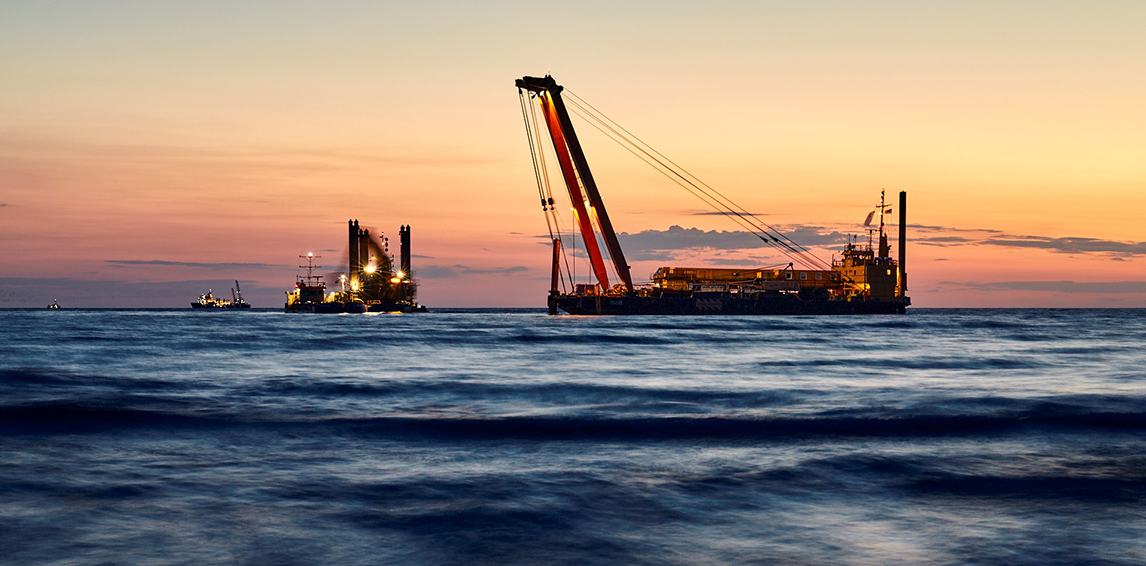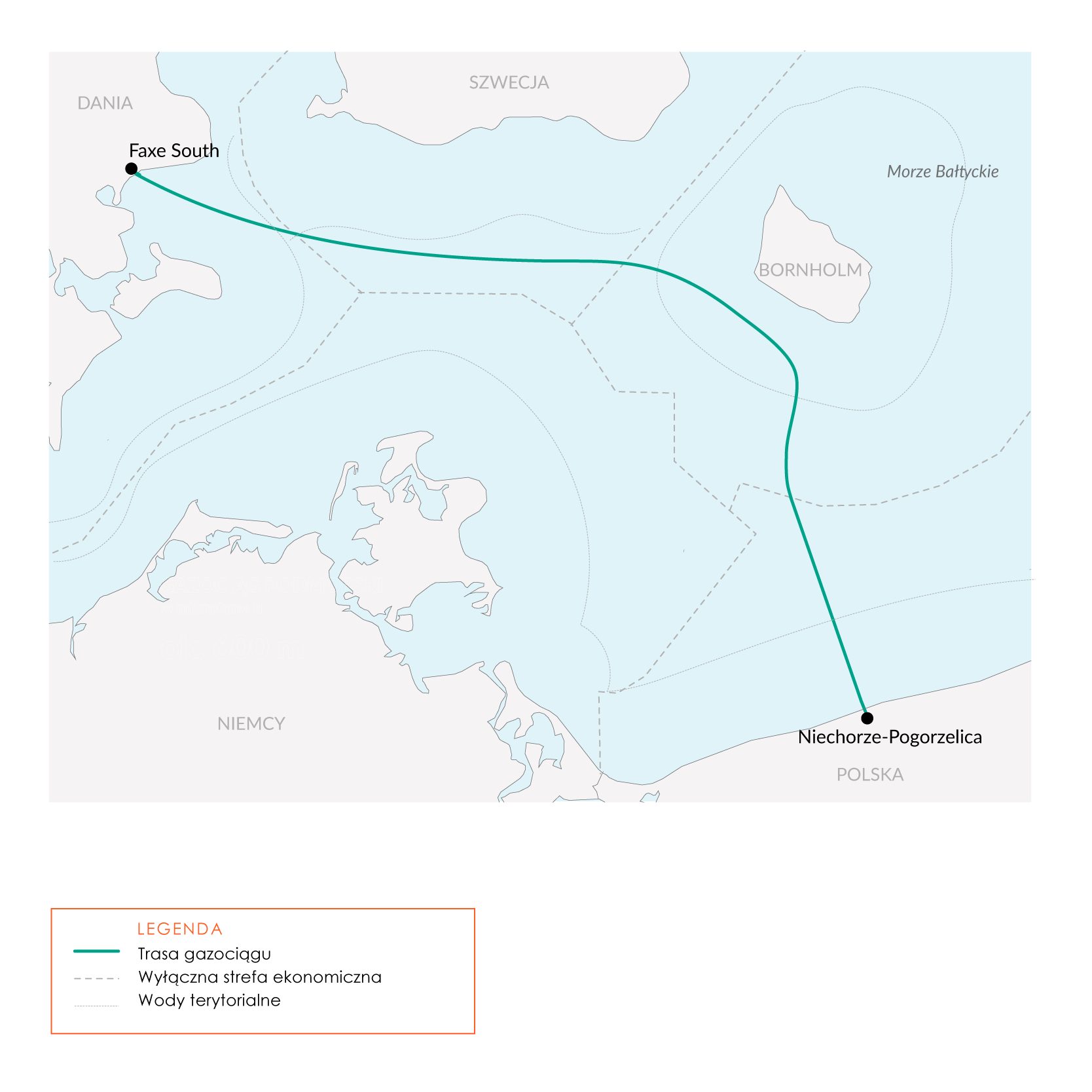Offshore pipeline Baltic Pipe

Basic parameters and description of the project:
Route and location:
- high pressure gas pipeline,
- diameter 900 mm
- length: approx. 275 km
The pipeline was built with 12.2 m long welded pipe sections which was laid on the seabed or buried. The offshore infrastructure end a few hundred metres beyond the beach, cliff and dunes, where it is connected with the onshore part. The connection of the offshore and onshore parts of the pipeline is called the “first dry weld” and marks the boundary between the two sections. The gas pipeline landfall section was drilled under the sea bed, beach and dunes.
For this purpose, microtunneling method was used, which means that the gas pipeline run underground in a concrete casing. Thanks to this method, the seashore and the dunes will not be affected and the development will not cause any significant limitations for access to the beach.
For this purpose, microtunneling method was used, which means that the gas pipeline run underground in a concrete casing. Thanks to this method, the seashore and the dunes will not be affected and the development will not cause any significant limitations for access to the beach.
Route and location:
The offshore part on the Baltic Sea bed passes through the territories of three countries: Denmark, Poland and Sweden.

Proximity and crossings withing vicinity of Baltic Pipe offshore pipeline
Performing work within 2 nautical miles of Baltic Pipe offshore pipeline and its associated structures requires interaction with Gaz-System S.A. in order to regulate and co-ordinate such work. Such activities include, but are not limited to:
If any work falls within +/- 200 m adjacent from the pipeline (pipeline safety zone), Gaz-System S.A. may require a formal Proximity Agreement to regulate the design and conduct of the work, and the interaction, responsibilities, and liabilities between the parties.
If credible risks for Baltic Pipe are identified, Gaz-System S.A. may shall require, i.a., a HAZID and/or risks analysis for construction and operational phase.
Gaz-System S.A. will determine whether a formal agreement is necessary. If an agreement is needed, Gaz-System S.A. shall provide a standard draft of a proximity/crossing agreement.
Prior to signing the proximity/crossing agreement Gaz-System S.A. shall asses the financial strength of the counter-party. Gaz-System S.A. may request co-signature or guarantee from a Parent Company for contractual obligations or submission of applicable insurance documentation.
Technical dialogue may commence after a Non Disclosure Agreement has been signed between the parties.
Performing work within 2 nautical miles of Baltic Pipe offshore pipeline and its associated structures requires interaction with Gaz-System S.A. in order to regulate and co-ordinate such work. Such activities include, but are not limited to:
- installation of anchors
- laying of cables or pipelines
- installation of subsea equipment
- other activities which may create a hazard to Baltic Pipe offshore pipeline and its associated structures (e.g. rock berms)
If any work falls within +/- 200 m adjacent from the pipeline (pipeline safety zone), Gaz-System S.A. may require a formal Proximity Agreement to regulate the design and conduct of the work, and the interaction, responsibilities, and liabilities between the parties.
If credible risks for Baltic Pipe are identified, Gaz-System S.A. may shall require, i.a., a HAZID and/or risks analysis for construction and operational phase.
Gaz-System S.A. will determine whether a formal agreement is necessary. If an agreement is needed, Gaz-System S.A. shall provide a standard draft of a proximity/crossing agreement.
Prior to signing the proximity/crossing agreement Gaz-System S.A. shall asses the financial strength of the counter-party. Gaz-System S.A. may request co-signature or guarantee from a Parent Company for contractual obligations or submission of applicable insurance documentation.
Technical dialogue may commence after a Non Disclosure Agreement has been signed between the parties.
Miljøkontrolrapport - Danmark_2023
ENVIROMENTALREPORTING RESTORATION OF THE-SEABED AT MICROTUNEL EXIT-DENMARK
ENVIROMENTALREPORTING SEDIMENT SPILL RATES DENMARK
ENVIRONMENTAL REPORTING PHYSICAL LOSSES-AND PHYSICAL DISTURBANCES OF THE SEABED DENMARK
MILJORAPP0RTERING FYSISKE TAB-0G FYSISKE F0RSTYRRELSER PA HAVBUNDEN DANMARK-1
MILJORAPPORTERING GENETABLERING AF HAVBUNDE VED MIKRO TUNNELS UDLGANGSGRAV DENMARK
MILORAPPORTERING SEDIMENT SPILD OG TURBIDITET DENMARK
